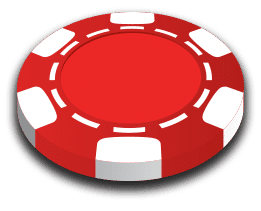This month’s hand history actually comes from a few years ago. I told someone about the hand this week and they thought it was really instructional, so I moved it to the front of the list.
It was my first hand of poker in the state of Wisconsin, at Ho Chunk Casino in Baraboo. The game was $1/2 no-limit. I was on a road trip and only in town for one night. I was dealt in to the game in middle position and looked down at two jacks my first hand. Not a bad start to the evening.
There was one limper before me – always a good sign when there are early position limpers – and I raised to $12. This would hopefully be enough to buy the button at least, narrow my opponent’s ranges, and see a flop short-handed or take down the pot now. This all failed completely. I got two callers between me and the button, and the big blind as well as the original limper called my $12 too. This brought the pot to around $60.
The flop was Q♥ 5♥ 2♣.
This isn’t a dream flop for me in a multiway pot, but it’s not that bad. Only one overcard, only one draw. I decided to check anyway because I had so many opponents and if a draw decided to raise I would have to fold. And sometimes a check here works out on the turn. The other players behind me checked as well.
The turn was the 9 of spades, about as blank as a card could be. I still don’t love my hand, but there’s a real possibility that I’m ahead since it checked through on the flop. But when the big blind leads out for $20, it doesn’t look as good for me. This is very likely a queen that was attempting to check-raise the flop and failed. His lead was immediate and confident. Not sneaky at all.
The big blind was an older white male in casual clothing. He didn’t look like a crazy gambler to me. This means he almost always has a queen or a nine here, though a set is possible. A lot of more conservative players will lead with a set on a board with a draw, especially in rural areas and in the Midwest. The more conservative the culture, the more careful the players often are about protecting big hands.
The first limper flat called almost instantly. This looks like a draw, but could also be a queen like KQ or QJ. With these conservative players AQ is also possible, though I would usually expect a small raise from AQ. Now it doesn’t look like I have the best hand does it? And it looks like I am facing a draw as well. Time to ditch these two jacks right?
Not so fast.
Never act before you consider all your options.
A call here is no good. It lets the draw stay in for free, probably with an overcard as well, and it leaves me in a big pot with the worst hand. My hand is fairly face up if I call here.
What about a raise? Seem insane? Most times it would be, but consider how my opponents will react.
The two players who checked behind me are unlikely to have a hand. They are in later position and would not usually check a queen on the flop for fear of an overcard or some other draw coming to beat them.
The original bettor will see my check behind on the flop and raise on the turn and have to worry that I have a monster. He also has a caller behind, and if he does in fact have a queen or a nine, he is almost certain to fold rather than get roped into a huge pot with one pair.
The caller, who originally limped in early position and had a chance to limp-reraise a big field did not choose to do so, so a set of queens is out of the question. Any set is really out of the question since the board has a flush draw and he checked through once and just called a bet on the turn. He can’t really have a big made hand, especially with his almost instant call on the turn.
If my reads are right, and admittedly they will be wrong a significant percentage of the time here with so many variables, I have a really good spot where I can manipulate my opponent’s ranges. Raising here doesn’t just act as a bluff to get my opponents to fold. It can also get the made hand that beats me, the likely queen in the big blind, to fold, while keeping in the draw that is out of position and is currently behind.
I raised to $55, and it worked. The two players behind me mucked instantly. The big blind thought for a moment, and folded. The early position limper called instantly again. He never calls instantly this many times unless he has a draw. Never.
The river was a very safe 3 of spades, my lone opponent now checked to me, and I showed my two jacks. He showed me a busted flush draw and mucked. Then, just to boost my confidence for the rest of the session, the big blind told me that he folded queen-ten.
This hand is important because it illustrates how important it can be to think about every possibility; something I myself forget far too often. It reminds me to have faith in my reads. And it points out that playing a hand in a unique way can often be used to manipulate your opponent’s ranges. Without the draw in there I may not have been able to make the big blind fold. Without the check on the flop, I probably don’t have a chance unless I want to just bomb away and hope no one has a monster. If I bet the flop, I probably have to fold when the big blind raises and the early position limper flat calls, because I have a lot less definition on their ranges. And without the turn raise, none of this works out at all.
The next time you are in a multiway hand, think everything through. Can you win this one? Can you get heads up against the draw while bluffing out the bigger made hand? Getting opponents to abandon bets they have put in the pot when they are ahead is very valuable. And getting draws to pay you off is also important. But we often forget that both things can happen in one hand. This time they did, and it worked out great for me. That pot was big enough to pay off the speeding ticket I got on the way home. I swear they have more state troopers than cheese.

